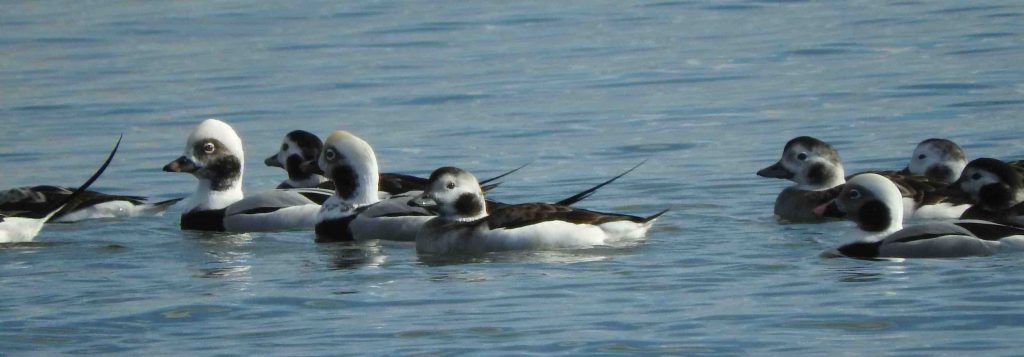Earlier this week, Steve Broker posed this question about long-tailed ducks on the CTbirds listserve. Both he, and Tom Robben, provided partial answers based on data from Christmas Bird Counts and eBird, which is to say, quite rare, but certainly not unheard of. Available data, however, are quite limited. Christmas Bird Counts are restricted to a 3-week window of time, and eBird records are highly dependent on how much birding attention inland sites get.
One of the motivations for the atlas inland waterbody and shoreline surveys was to get better information about the distribution of nonbreeding waterbirds in the state. Along the coast there is typically good coverage during winter, although it is more concentrated in the western half of the state. Away from the coast, the story is different. There are a few lakes and spots along the Connecticut River that birders regularly visit, but reports from most inland waterbodies are rare.
For example, each winter I visit Moosup Lake in northeast Connecticut during the Trailwoods CBC, but I’ve never birded there at any other time, and I don’t think I’ve ever seen a report for this site from another birder. Nearly every winter, however, I find something interesting when I do visit the lake – over the years, my observations have included cackling goose, barnacle goose, pied-billed grebe, ten species of ducks, and both glaucous and Iceland gull. Clearly, these rarely-birded inland lakes have more potential than we perhaps assume.
During migration especially, lots of species that we think of as coastal can turn up on these lakes – including all three loons, horned and red-necked grebes, all three scoters, both scaup, redheads, canvasbacks, and – of course – long-tailed ducks. On any given day, the odds of seeing something unusual are low, but often these lakes can be comprehensively birded quite quickly, so it doesn’t take much time to check. The two atlas waterbird surveys were, therefore, designed to encourage people to visit their local lakes and rivers more frequently to try to document their use by these species, both to give us a better sense of just how many waterbirds move through the state and to help us understand why some lakes are used more than others.
Field work for the winter portion of the atlas ended last week, and most of us are starting to transitioning back into breeding atlas mode. But early spring is the period when many waterbirds are likely to show up away from the coast. We would, therefore, strongly encourage everyone to continue to check their local lakes and rivers, and to submit inland waterbody or shoreline surveys through the next few weeks. If you are not already familiar with the methods, forms and protocols are all available on the atlas web site.

Long-tailed ducks occur on inland lakes and rivers occasionally during winter, but to see them in any numbers it is usually best to travel to the coast.